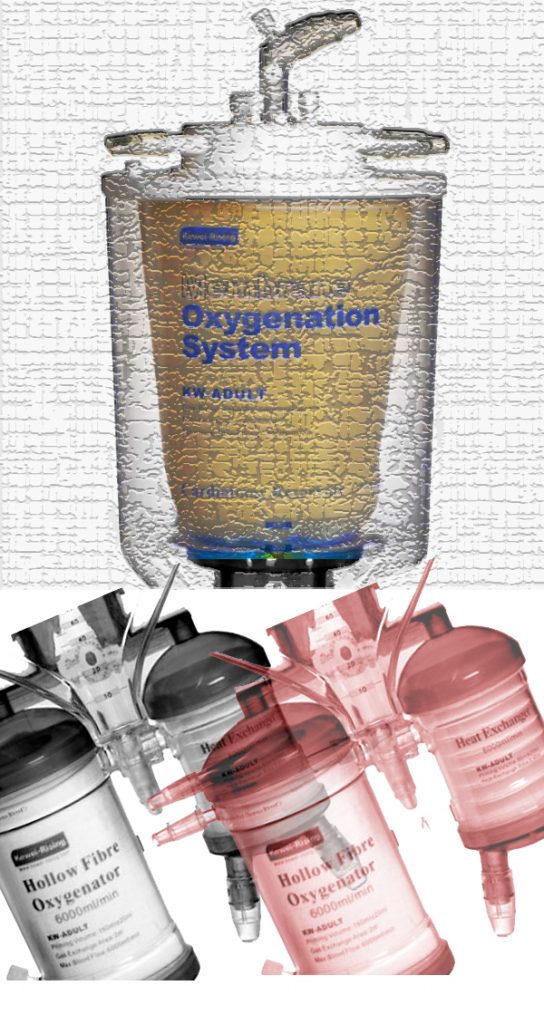Oxygenator Changeout

PROCEDURE FOR IMPLEMENTATION:
A. Equipment Needed:
1. One (1) new oxygenator
2. Four (4 – 6) tubing clamps
3. Sterile heavy scissors or knife blade
4. Alcohol swabs
B. Procedure for Changing Membrane Oxygenators:
1. If warm, cool the patient if time permits.
2. Close the arterial line filter bleed line, turn off the pump, occlude the venous line and double clamp the inlet line of the oxygenator adjacent to the oxygenator’s inlet port. Be sure to leave adequate distance between clamps if possible (3-4 inches). Set timer for down time.
3. Thoroughly swab the area to be cut with alcohol pad. Aseptically cut the line between the clamps and attach the line to the inlet port of the new oxygenator.
4. If time and circumstances permit, most of the blood in the old oxygenator can be salvaged, especially with hollow fiber oxygenators. This can be accomplished by clamping the arterial line distal to the recirculation line and allowing the oxygenator to drain by gravity to the venous reservoir and cardiotomy reservoir. Clamp the recirculation line after this is accomplished. This technique can be carried out while another perfusionist performs parts of the rest of the procedure.
5. Remove the clamps from the inlet line and from the cardiotomy line. Slowly fill the oxygenator. This serves to vent most of the air in the oxygenator to the room rather than through the bag.
6. When the oxygenator is nearly full, turn off the pump. Double clamp the outlet line of the old oxygenator adjacent to the port, aseptically cut the line between the clamps and attach the outlet line to the new oxygenator’s outlet port.
7. Open the recirculation line and slowly pump through the oxygenator. Increase pump speed and debubble the oxygenator and lines until the system is bubble free.
8. Transfer the gas line from the old oxygenator to the new oxygenator.
9. Remove the clamp from the arterial line, close the recirculation line and reinitiate bypass in the normal manner.
10. Correct hematocrit and blood gases as required.
11. Attach the water lines and monitoring equipment as time permits.
12. If a hollow fiber oxygenator is being used in combination with a centrifugal pump:
(a) both inlet and outlet connections can be made,
(b) turn the centrifugal pump on to 2000 RPM’s,
(c) slowly remove the inlet line to the oxygenator while keeping the outlet clamped,
(d) purge the air in the fiber bundle across the fibers and to the gas vent port,
(e) reduce RPM’s to 1500, take off the outlet clamp slowly and purge any of the remaining air across the arterial line filter,
(f) when clear, open the arterial line clamp and resume bypass.

